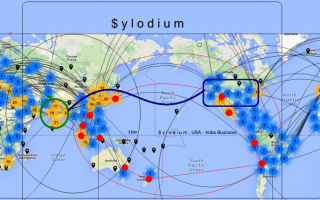US’s companies still find it difficult to do business in India
India still has an inconsistent regulatory environment, systemic infrastructure bottlenecks, lack of transparency and uncertainty in corporate governance rules,
US' trade and investment with India will also greatly depend on the Government of India's efforts to strengthen the local business climate.
Trade in Goods with India
Intellectual Property Rights protection is another key concern for US companies that will need to be addressed to prompt greater foreign investment.
US companies are looking to India to "approve and implement long-awaited reforms"
the Goods and Services Tax (GST),
the Land Acquisition Bill
the Bankruptcy Law
US businesses have to be patient since reforms cannot be implemented overnight and given the vast growth opportunities in India,
If you'd want to reach new business realities between India and USA, join us as Premium user to take advantage of our global Barter (transactions), segmentation Banner, and our 2 business networkings
INDIA - USA business
U.S.-India Commercial, Trade, and Economic Cooperation
historical background
after India’s independence from Great Britain in 1947, In 1954, United States of America made Pakistan a Central Treaty Organization (CENTO) treaty-ally.
India cultivated strategic and military relations with the Soviet Union to counter US-Pakistan ties.
In 1961, India became a founding member of the Non-Aligned Movement to avoid involvement in the Cold War power-play between the USA and USSR.
The Nixon administration's support for Pakistan during the Indo-Pakistani War of 1971 affected relations till the dissolution of the Soviet Union in 1991.
In the 1990s, Indian foreign policy adapted to the unipolar world and developed closer ties with the United States.
United States and India share a strong and growing commercial and economic relationship, driven by entrepreneurs and businesses in both countries.
Today
In January, President Obama and Prime Minister Modi decided to elevate the bilateral commercial and economic partnership by establishing the first-ever U.S.-India Strategic and Commercial Dialogue (S&CD) which was held today in Washington, DC.
The S&CD is the signature, annual forum for policy discussions between the United States Government and the Government of India.
The United States and Indian Governments are using this vehicle to advance our shared priorities of generating economic growth, creating jobs, and strengthening the middle class.
bilateral trade has grown from $19 billion in 2000 to over $100 billion in 2014. U.S. exports to India totaled $38 billion last year, supporting an estimated 181,000 U.S. jobs.
Cumulative Indian foreign direct investment in the United States totaled $7.8 billion in 2014; U.S. foreign direct investment into India was $28 billion.
Below are key highlights of progress since the 2014 U.S.-India Strategic Dialogue:
Commercial, Trade, and Investment Partnerships
Infrastructure and Smart Cities Collaboration
Transportation Cooperation

USA – INDIA business, USA in TPP.
The relations of US with India, are part of its strategy to increase its presence in Asian’s countries as the TPP recent signed with Japan, Vietnam (yes Vietnam, what has a very relevant meaning referencing China), Singapore, Malaysia, among others until 12 countries that agreed to remove or lower tariffs and introduce unified international trade and investment rules under the deal that covers 40 percent of the global economy.
Some countries face difficulties in pursuing smooth implementation.
The Japanese government is required to remove tariffs on 95.1 percent of farm, industrial and other imported products in value terms under the pact, while it expects the trade initiative to boost its real GDP by 13.6 trillion yen ($112 billion) or 2.59 percent from fiscal 2014.
The agreement will enter into force 60 days after all 12 countries ratify it. But if all 12 nations have not ratified it after two years, it will take effect 60 days after at least six countries, accounting for 85 percent of the combined gross domestic product of the 12 signatories, do so.
A total of 11 laws need to be revised in Japan to include new rules and protections against changes brought by the free trade accord.
Tourism business, import export business, traders, from Korea to Japan from Korea to China….
Work with us, representing South Korea with rest of the world, for example.
Participate with your ideas and win until 3.000 dollars in Forum-Business-Contest
SYNERGIES TO EXPLORE WITH SYLODIUM,
Imagine the relations in TPP
Trans Pacific Partnerhsip Organization
US – Malaysia Business
Peru – Singapore….
12 countries, in mutual relationship suppose 12x12, 144 business places, all of them in Sylodium.
Tap Sylodium (the global platform for bilateral trade) you can advertise for free your company or your project, at the intersection of cities that you want,
Become a Premium user
1 WORK WITH US .
take a look to our coming
Revolutionary system for international business in Internet
West Delhi - 25/11/2013
West Delhi - 13/11/2013
West Delhi - 05/08/2013
West Delhi - 27/07/2013
West Delhi - 23/07/2013
West Delhi - 23/07/2013
West Delhi - 23/07/2013
West Delhi - 23/07/2013
West Delhi - 23/07/2013
West Delhi - 23/07/2013
West Delhi - 23/07/2013
West Delhi - 23/07/2013
West Delhi - 23/07/2013
West Delhi - 23/07/2013
West Delhi - 31/01/2013

